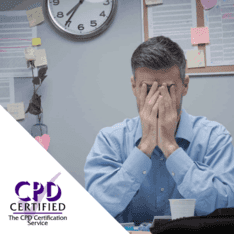Assessing whether stress is a problem in your workplace
In the UK we are very good at carrying out assessments in the workplace. Time and motion, quality, hygiene, health and safety etc. We can assess and audit most things, but how do you assess stress in the workplace, and what is work related stress and stress management?
The simple solution. Ask people.
Carrying out a stress audit is one of the easiest ways to assess whether stress is a problem in the workplace.
Not only that, it will help the employer assess the risks of stress that people in the business face as part of the organisation’s health and safety risk assessment.
A stress audit can be conducted individually or in groups and generally revolves around an informal discussion to find out if there are any issues or concerns.
Clarity and openness should be observed at all times so that employees know why the discussion is taking place, and there should also be an assurance of confidentiality of any information gathered.
Where to start
While there maybe pre-made questionnaires that can get you going, you may want to start on a more simple and personal level such as asking attendees to list the 3 best things and 3 worst things about their own job role and what sort of pressure this puts them under.
You could then maybe follow that up with a checklist that is personal or relevant to your own workplace rather than a generic form.
Key areas to consider might include:
- The type of work your company undertakes and how it is scheduled.
- Working relationships with colleagues and management.
- The structure of communication from above and reporting back.
- Employees/ employers expectations of the workload.
- The working environment, both physical and cultural. (Including home working)
The role of the manager in stress management.
Managers can have a significant impact on the wellbeing of their team.
Simply through their attitude or behaviour towards the team they can cause and increase stress, or they can reduce and manage it.
Managers can protect workers against situations that may cause stress by exercising their influence, or expose them to more stress by a lack of influence. Either way, managers can detect (or miss) signs of a stressful situation at an early stage and either take action or not.
If an employee is showing signs of work related stress and anxiety then the manager should be involved in supporting and implementing changes that bring about change and ultimately a resolution.
Managers should also be looking at the stress risks involved in their department and carrying out an assessment to see if change is required.
Work related stress – The management standards
The HSE have identified 6 common causes of work related stress across all organisations and a framework of management competencies to deal with the causes.
The primary sources of stress in the workplace are:
> Demands. Workload, work patterns, the physical environment – including working from home (excessive noise, poor comfort, heat, cold etc)
> Control. The control the individual has over the way they work or their environment.
> Support. The level of support offered (or not) by the company, managers or colleagues
> Role. An understanding of their role and how it fits into the organisation. Also, no conflicting roles.
> Relationships. Unacceptable behaviour / conflicts and the mechanisms for dealing with it.
> Change. Suspicion of change, how it is dealt with and explained.
Management Activities
There are five management activities that can be carried out that map directly to the main causes of work related stress.
1. Identify the risks.
This could be work overload, dangerous situations, violence, lone working, poor command of English etc.
2. Who could be harmed and how.
In small organisations it could be individuals, or groups of people in larger organisations. It could include young workers, unskilled operatives, non-English speakers, different genders etc. In fact it could be anybody, which is why it’s so important to identify the risk first. A good place to start is with absence and sickness records to see if there are any patterns emerging either with departments or individuals.
3. Evaluation of the risk.
Review the findings of the previous two steps and discuss the conclusions with a representative sample of employees to help develop solutions.
4. Record the findings. This will allow you to develop an action plan which in turn will assist with:
– Setting goals to work towards.
– Prioritization.
– Demonstrate a commitment to resolving the problem.
– Provide a benchmark to review and evaluate in the future.
5. Monitor and review.
By this point you should have sufficient information and commitment in place to:
– Monitor against the action plan so it is clear the agreed action plan is being implemented.
– Evaluate the effectiveness of the action.
– Decide if any further action or alteration to the plan is needed.
The importance of line manager competency
The HSE have a line manager competency tool which will allow managers to compare their own behaviours against the devised management standards.
You can access the tool Here. <Line Manager Competency Indicator Tool>
The aim of the tool is to help a manager reflect upon their own behaviour or management style but the competencies fall into 4 distinct categories, with sub-categories.
1. Acting respectfully and responsibly.
- Showing integrity.
- Having a considerate approach.
- The ability to manage emotions.
2. Management and communication of existing and future workload.
- The ability to be a proactive work manager.
- Be a problem solver.
- Be participative and empowering
3. The ability to reason with and manage difficult situations.
- Be able to take responsibility for solving issues.
- Manage conflict.
- Understand and use the resources of the organisation.
4. Managing individuals within a team.
- Have an empathetic engaging manner.
- Be personally accessible
- Be a sociable person.
What are the legal requirements
Employers have a legal responsibility to protect employees from workplace stress and anxiety under various acts, regulations and guidance. Including but not limited to:
- The Health and Safety at Work Act 1974
- The Management of Health and Safety at Work Regulations.
- The Employment Equality Act.
- Employment Rights Act.
- CDM Regs 2015
- Protection from Harrassment
All are important and have a role to play in protecting the welfare of employees including stress and anxiety at work.
The most notable are:
The Health and Safety at Work Act 1974.
This is the foundation act of workplace Health and Safety across the UK which imposes duties on employers to ensure the health, safety and welfare of employees and to protect others from harm arising from the work activity.
The act makes it the duty of every employer to ensure so far as is reasonably practicable the health, safety and welfare at work of all employees.
The Management of Health and Safety at Work Regulations.
The Management Regulations place a legal duty on employers to assess the risks presented by the work activity and introduce measures that control the risk to an acceptable or manageable level, as far as is reasonably practical.
The Employment Equality Act.
The act sets out to treat people fairly, irrespective of any condition that might develop. This includes mental illness, stress, depression or anxiety.
As long as the condition proves to be long term and affects the ability of the individual to carry out their normal day to day duties then they will be covered by the act.
If an employee is covered by the act then the employer is required to make reasonable adjustments to meet the needs of the employee.
Further reading and study of this act can be found on the HSE website at <Disability Law>
Training and CPD
HST have teamed up with an online partner to bring you health, safety and compliance training at very affordable prices. These courses available 24/7 so you can study at a time to suit you.
Further reading on this subject.
>> Work from home anxiety – 7 top tips for a great work-life balance
>> What is work related stress and anxiety
Recommended Further Reading
How to design, evaluate and implement an effective strategy.






3 thoughts on “Work Related Stress and Stress Management”